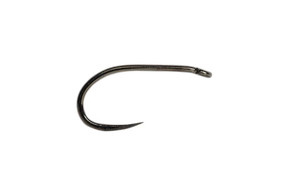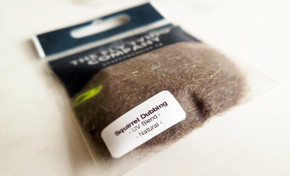Thunder & Lightning Trout Fly Pattern: Materials, Tying Steps & Fishing Tips
Origin and History
The Thunder & Lightning trout fly is a scaled-down adaptation of the famous salmon pattern, first tied by James Wright on the River Tweed in the 19th century. The trout version retains the bold colour scheme of black, orange, and yellow, but is tied in smaller sizes for stillwater and loch fishing. Its vibrant profile makes it a reliable attractor pattern, especially in coloured or choppy water, where trout respond to its flash and contrast.
Materials
- Hook: Wet fly hook, sizes 8–12
- Thread: Black 6/0 or 8/0
- Tail: Golden pheasant crest fibres
- Body: Black floss rear half, orange floss front half
- Rib: Fine oval silver tinsel
- Hackle: Orange cock hackle, palmered or as throat hackle
- Wing: Bronze mallard fibres (slips) or matched duck quills
Popular Variations
- Thunder & Lightning Dabber – tied bushier for use as a top dropper
- Thunder & Lightning Mini – tied on size 12–14 hooks for selective trout
- Silver-Rib Thunder & Lightning – heavier ribbing for extra flash
- Claret Hackle Variant – replaces orange hackle with claret for peaty water
- Thorax Thunder & Lightning – bulkier front end for added movement
Step-by-Step Tying Guide
- Start black thread at the hook eye and wind to the bend.
- Tie in a short golden pheasant crest for the tail.
- Attach silver oval tinsel rib at the bend.
- Form the rear half of the body with black floss and the front half with orange floss.
- Counter-wrap rib through the body for segmentation and strength.
- Tie in an orange cock hackle, either palmered along the body or as a throat hackle.
- Add a slim, neat wing of bronze mallard slips.
- Finish with a neat black thread head, whip finish, and varnish.
Seasonality & Representation
The Thunder & Lightning trout fly is most effective in summer and autumn, especially on lochs and reservoirs during rough weather or coloured water conditions. Its vivid orange and black contrast makes it a strong attractor, imitating nothing specific but suggesting drowned terrestrials, sedges, or fry in the surface layers.
Tackle and Setup
- Rod: 10ft, 6–7wt for stillwaters and lochs
- Line: Floating, midge tip, or slow intermediate
- Leader: 12–18ft fluorocarbon, strength 6–10lb
- Setup: Fished in a loch-style team, especially effective as a top dropper fly
Summary Table
| Aspect | Details |
|---|---|
| Origin | Adapted from James Wright’s salmon pattern, 19th century |
| Best Seasons | Summer to Autumn |
| Represents | Attractor; suggests sedges, terrestrials, or fry |
| Hook Sizes | 8–12 |
| Tackle Setup | 10ft rod, floating/midge tip line, 12–18ft leader, fished loch-style |












